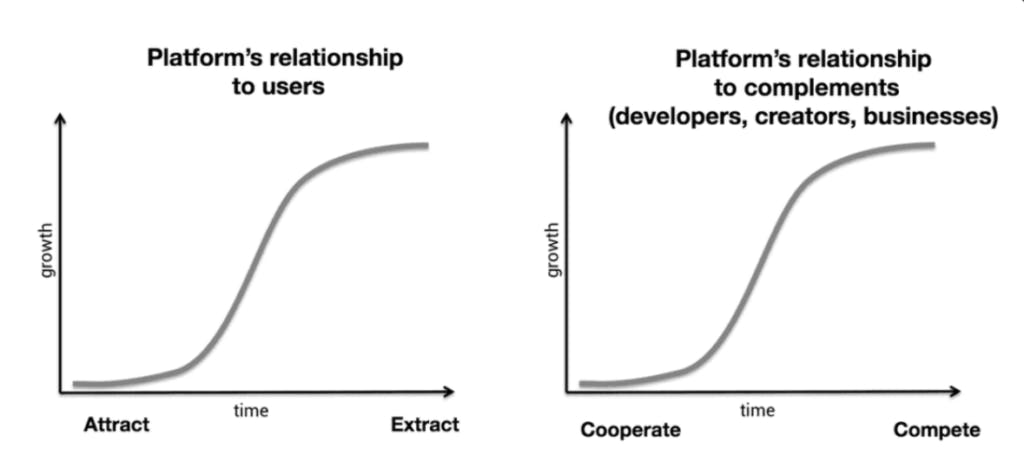Web3 : Let's Understand It Together !
Many People are talking about Web3. Is it the Internet of the future or Just a buzz Word?

History of The Web
The nascent days of the Internet in the 1990s were Web 1.0. The web was seen as a way to democratize access to information, but there weren't great ways of navigating it beyond going to your friend's GeoCities page. It was pretty disorganized and overwhelming.
Then came Web 2.0 starting in the mid-2000s. Platforms like Google, Amazon, Facebook and Twitter emerged to bring order to the Internet by making it easy to connect and transact online. Critics say over time those companies amassed too much power.
Web3 is about grabbing some of the power back.
Then What's The Web3
Instead, they are decentralized, built upon a system known as the blockchain, which already undergirds Bitcoin and other cryptocurrencies. Imagine it as a kind of bookkeeping where many computers at once host data that's searchable by anyone. It's operated by users collectively, rather than a corporation. People are given "tokens" for participating. The tokens can be used to vote on decisions, and even accrue real value.
In a Web3 world, people control their own data and bounce around from social media to email to shopping using a single personalized account, creating a public record on the blockchain of all of that activity.
"To the average person, it does sounds like voodoo," said Olga Mack, entrepreneur and blockchain lecturer at University of California, Berkeley. "But when you press a button to switch on lights, do you understand how the electricity is made? You don't have to know how electricity works to understand the benefits. Same is true of the blockchain."
Right now, the idea of the entire Internet reinventing may sound like some far-away digital utopia. But Web3 is driving new conversations — and generating lots of new money, particularly from crypto investors.
Why Does Web3 Matter?
First, let’s look at the problems with centralized platforms.
 Centralized platforms follow a predictable life cycle. At first, they do everything they can to recruit users and third-party complements like creators, developers, and businesses.
Centralized platforms follow a predictable life cycle. At first, they do everything they can to recruit users and third-party complements like creators, developers, and businesses.
They do this to strengthen their network effect. As platforms move up the adoption S-curve, their power over users and third parties steadily grows.
When they hit the top of the S-curve, their relationships with network participants change from positive-sum to zero-sum. To continue growing requires extracting data from users and competing with (former) partners.
Famous examples of this are Microsoft vs. Netscape, Google vs. Yelp, Facebook vs. Zynga, Twitter vs. its third-party clients, and Epic vs. Apple.
For third parties, the transition from cooperation to competition feels like a bait-and-switch. Over time, the best entrepreneurs, developers, and investors have learned to not build on top of centralized platforms. This has stifled innovation.
The Deep meaning of Web3
Now let’s talk about web3. In web3, ownership and control is decentralized. Users and builders can own pieces of internet services by owning tokens, both non-fungible (NFTs) and fungible.
Tokens give users property rights: the ability to own a piece of the internet.
NFTs give users the ability to own objects, which can be art, photos, code, music, text, game objects, credentials, governance rights, access passes, and whatever else people dream up next.
NFTs exist on top of blockchains like Ethereum. Ethereum is a decentralized global computer that is owned and operated by its users.
Blockchains are special computers that anyone can access but no one owns.
Ethereum is powered by a fungible token, ETH, which is used to incentivize the physical computers that underlie the system. ETH is also the system’s native currency for transactions, like NFT purchases.
There are many ways for users to acquire fungible and non-fungible tokens. You can buy them, but there are also ways to earn them.
Uniswap famously retroactively airdropped 15% of its governance tokens to early users of the protocol. Community grants like this have become common in web3 as a way to build goodwill and incentivize adoption.
You can also earn tokens through creative and entrepreneurial activities. For example, people are earning roughly $100 million worth of ETH per day selling NFTs.
Tokens align network participants to work together toward a common goal — the growth of the network and the appreciation of the token.
This fixes the core problem of centralized networks, where the value is accumulated by one company, and the company ends up fighting its own users and partners.
Before web3, users and builders had to choose between the limited functionality of web1 or the corporate, centralized model of web2.
Web3 offers a new way that combines the best aspects of the previous eras. It’s very early in this movement and a great time to get involved.
Conclusion
Blockchain and other technology based on it are growing in popularity. The majority of tech enthusiasts have accepted these developments and have been credited with shaping the future. One such technology is Web3 that is getting attention.
I hope you found this article insightful. Thanks for reading. Please like/share so that it reaches others as well. Let's connect. I share my learnings on JavaScript, Web Development, Career, and Content on these platforms as well,

